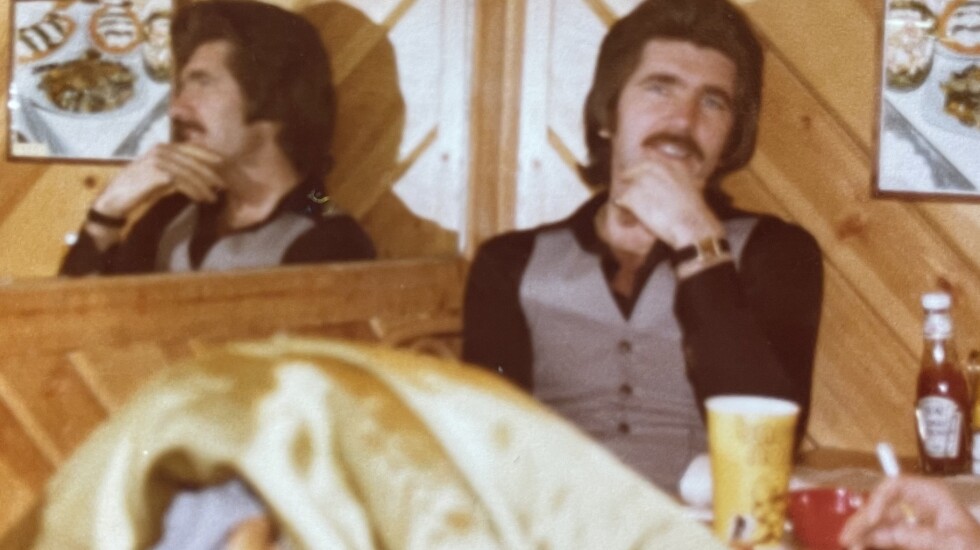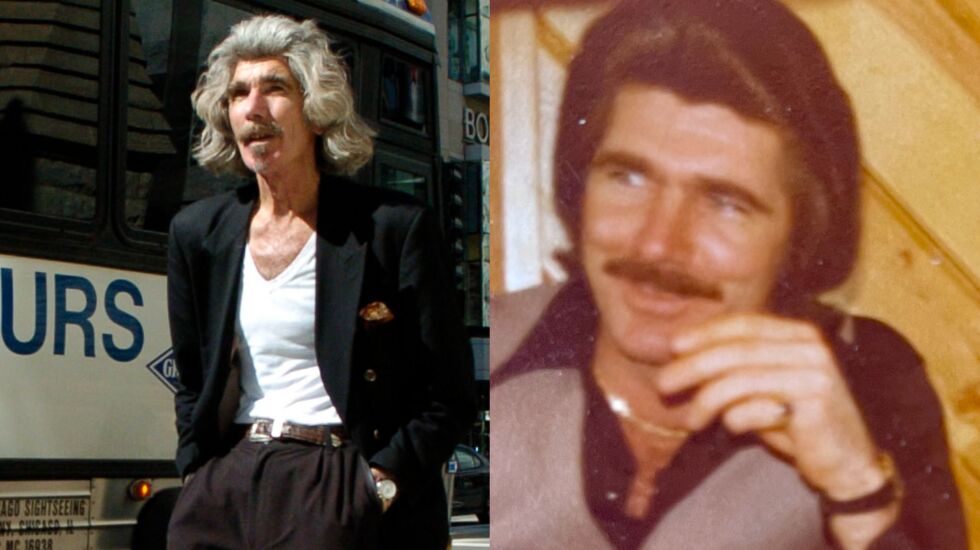
In the 1970s, Viki Mammina knew him as “Mojo.” It took another four decades to learn her old friend — and old crush — had become the mythical “Walking Man” of Chicago.
Mammina met Joseph Kromelis shortly after moving to Chicago in 1974 for art school. She fell into the company of several peddlers who met most nights at a Near North Side cafe.
They talked about work and life.
“They were my family,” said Mammina, 66. “They worried about me and I worried about them,”
But Kromelis wasn’t famous then. In their group, Kromelis was shy but always well-dressed, Mammina said.

Other street folks gathered with them at the cafe. “I remember ‘DP Joe,’ ‘Joey Diamond’ and even Barrett Deems, who was a drummer for Louis Armstrong, that would stop by,” Mammina said.
“They kind of adopted me,” she said. “Back in the day, you’d walk and walk and see the same people every day” and connect with them.
“It was like ‘Cheers,’” said Sidney Thoms, 69, who worked then with Mammina at K&S Photographics and met her and Kromelis at the cafe.
“There was no judgment. It was people talking about what they think. There were never heated discussions,” said Thoms, who now lives in Arizona.
As peddlers, their conversations often turned to the deals at the Maxwell Street Market — and the price of gold.
Kromelis would buy knockoff “Bolex” watches that Mammina, using her skills as a photo lab technician, altered to say Rolex, she said.
“During the ‘70s, there were still places these guys could rent rooms affordably nearby. This was Rush Street in the mid-to-late-’70s disco era, pre-AIDS. It was an exciting time in my young life,” she said.
She lost touch with Kromelis in 1980 when she moved to Los Angeles, then settled in Chattanooga, Tennessee, where she works as an artist.
She learned of Kromelis’ death and his local fame in December after his obituary showed up in her Facebook feed.
“It just said ‘Chicago Walking Man.’ And it was that picture of him with white hair. And it took me maybe a minute to go, ‘That’s Mojo!’” she said.
At her son’s house, she dug up old photos she had taken of him in the 1970s.
Mammina last saw Kromelis during a visit to Chicago in 1985. He instantly recognized her and they talked for an hour as if no time had passed.

Kromelis was born in Europe and moved to Chicago, growing up over a bar his family ran on Halsted Street, his family has said.
When he was 19, his family moved to Michigan but he stayed. He tried a factory job but didn’t like it, then got a peddler’s license and sold jewelry on the street.
He lived in efficiency apartments for years but was forced onto the streets sometime in the past decade.
Kromelis died in December at age 75 from injuries he suffered in an attack last year. Someone had poured flammable liquid on him while he slept on Lower Wabash Avenue, badly burning him. In 2016, he was attacked on the street and badly injured.
His ashes were interred in January at the St. Boniface Cemetery on the North Side.

Mammina remembers one personal moment with Kromelis. She had taken a sudden trip to Hawaii for two weeks but Kromelis didn’t know.
“I think he was worried about me,” she said. Kromelis found her at a payphone “and we ended up kissing,” she said.
“It was so funny because, I mean, I had a major crush on him. But we never talked about it after that,” she said. “I’m sorry today I wasn’t bolder, because I would’ve followed him anywhere.”
Life likely got harder for Kromelis as he grew older and his friends moved away or died, Mammina said. Rush Street used to be seedy and affordable; he and everyone else got priced out.
“He was such a good dresser. He was so proud. I can’t even imagine him trying to keep up appearances while living on the street,” she said.
“They would rent rooms pretty reasonably back then. That’s where most of these guys lived. All of the row houses, now they’re multimillion-dollar” homes.
Mammina said she wants people to know Kromelis was more than just a Chicago character.
“Joe was a person,” she said. “He really was a nice guy.”










